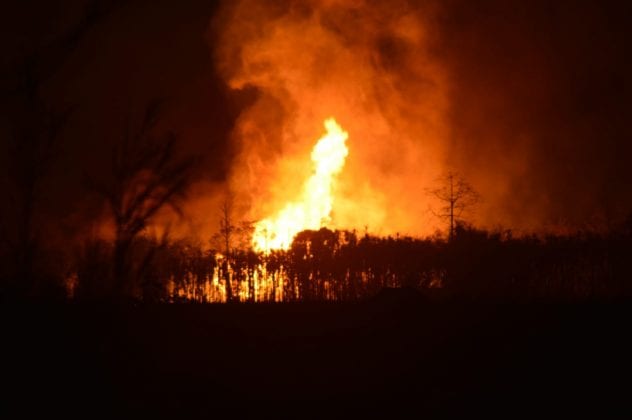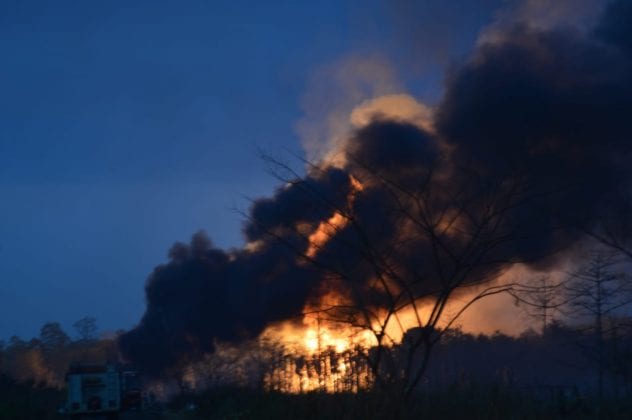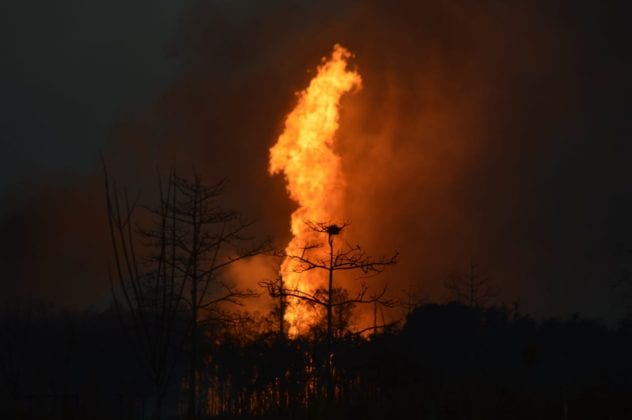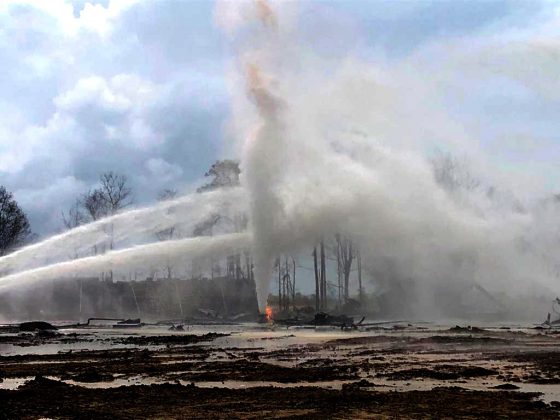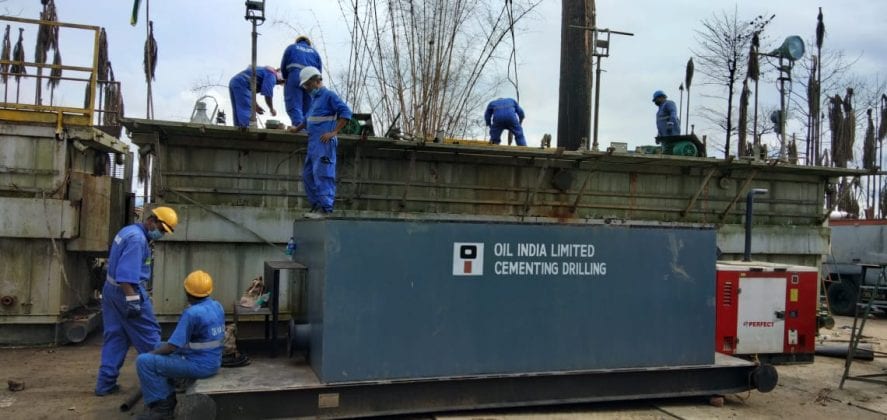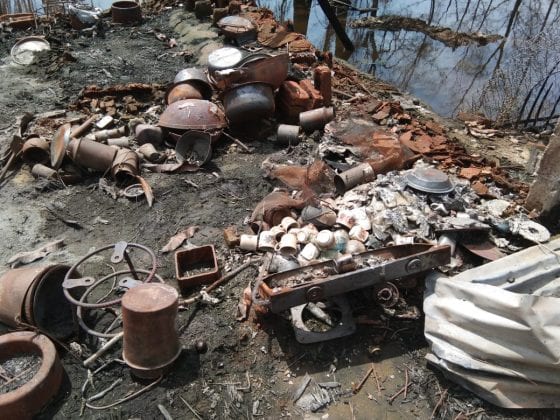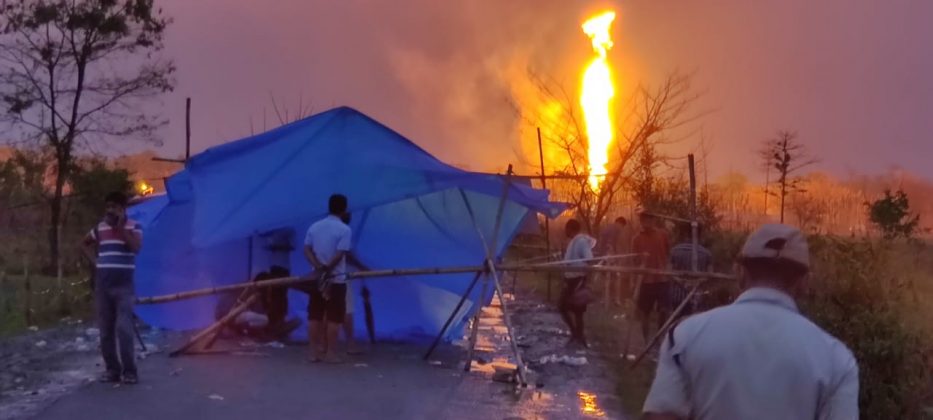
- Home
- News
- Analysis
- States
- Perspective
- Videos
- Education
- Entertainment
- Elections
- World Cup 2023
- Features
- Health
- Business
- Series
- Economy Series
- Earth Day
- Kashmir’s Frozen Turbulence
- India@75
- The legend of Ramjanmabhoomi
- Liberalisation@30
- How to tame a dragon
- Celebrating biodiversity
- Farm Matters
- 50 days of solitude
- Bringing Migrants Home
- Budget 2020
- Jharkhand Votes
- The Federal Investigates
- The Federal Impact
- Vanishing Sand
- Gandhi @ 150
- Andhra Today
- Field report
- Operation Gulmarg
- Pandemic @1 Mn in India
- The Federal Year-End
- The Zero Year
- Premium
- Science
- Brand studio
- Home
- NewsNews
- Analysis
- StatesStates
- PerspectivePerspective
- VideosVideos
- Entertainment
- ElectionsElections
- Sports
- Loading...
Sports - Features
- BusinessBusiness
- Premium
- Loading...
Premium
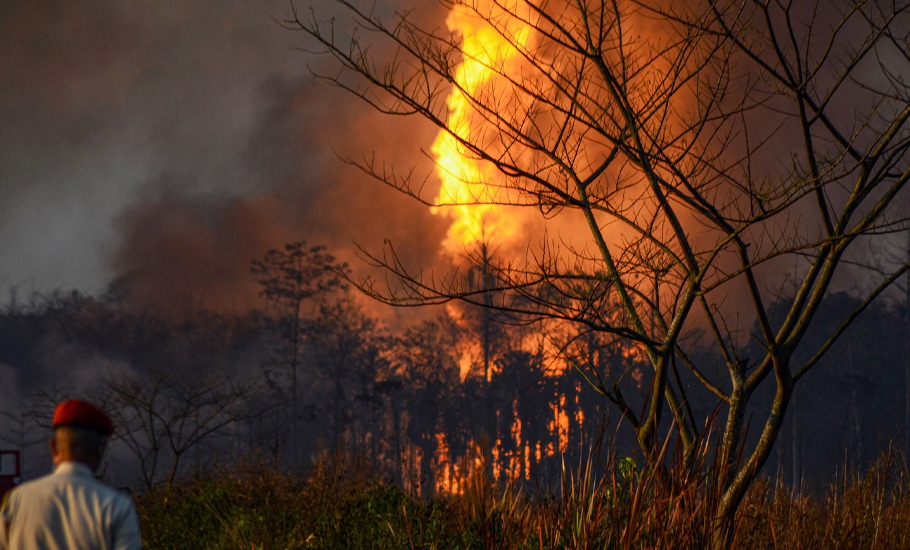
Assam fire: 3 months on, villagers caught in OIL’s ‘smokescreen’
For nearly three months, a fire has been raging at OIL's natural gas field in Assam's Baghjan, leaving thousands of people homeless, their crops and cattle destroyed and the ecology affected.

A gigantic orange and red streak splashed in the night sky appears resplendent from a safe distance of Doomdooma town, about 18 kilometres from the blazing oil field in Assam’s Tinsukia district. But as one travels a few kilometres north-west, the magnitude of the catastrophe starts unfolding. “Tin mah hobo loi hol, aami eitau relief camp-ote pori asu…. kiman okhubidha…...
A gigantic orange and red streak splashed in the night sky appears resplendent from a safe distance of Doomdooma town, about 18 kilometres from the blazing oil field in Assam’s Tinsukia district. But as one travels a few kilometres north-west, the magnitude of the catastrophe starts unfolding.
“Tin mah hobo loi hol, aami eitau relief camp-ote pori asu…. kiman okhubidha… ghar, bagan sob nosto hoi gol (It’s been almost three months now that we have been languishing in this relief camp with lots of hardship. Our homes, tea gardens, everything has turned into ashes),” Tikhnajyoti Hazarika, a resident of Baghjan village, tells The Federal.
Hazarika’s house was just 400 metres from the state-run Oil Indiia Limited’s ill-fated gas well number 5 at Baghjan oil field. On May 27 around 10.30 am, the natural gas from the well started spewing out flames uncontrollably, leaping to a height of above 20 feet, due to a blowout.
A thick whitish smoke soon engulfed the nearby area raining gas condensate oil droplets, destroying vegetation, polluting paddy fields, damaging tin roofs and creating breathing problems for humans, prompting the district administration to evacuate residents near the site.
Hazarika’s eight-member family was among those who moved to the relief camp set up at the Baghjan Lower Primary School with some clothes and other basic necessities. Little did they know that a much bigger disaster was awaiting them.
About two weeks later, on June 9, a massive fire erupted at the damaged well, killing two people, gutting over 50 houses, and causing irreversible damage to the ecologically fragile Dibru-Saikhowa National Park and Biosphere Reserve and other ecological hotspots in close proximity.
Agricultural area to the tune of 1,210 hectares and 470 hectares of a small tea gardens were damaged due to the spillage and fire, according to an estimate prepared by the Tinsukia district administration.
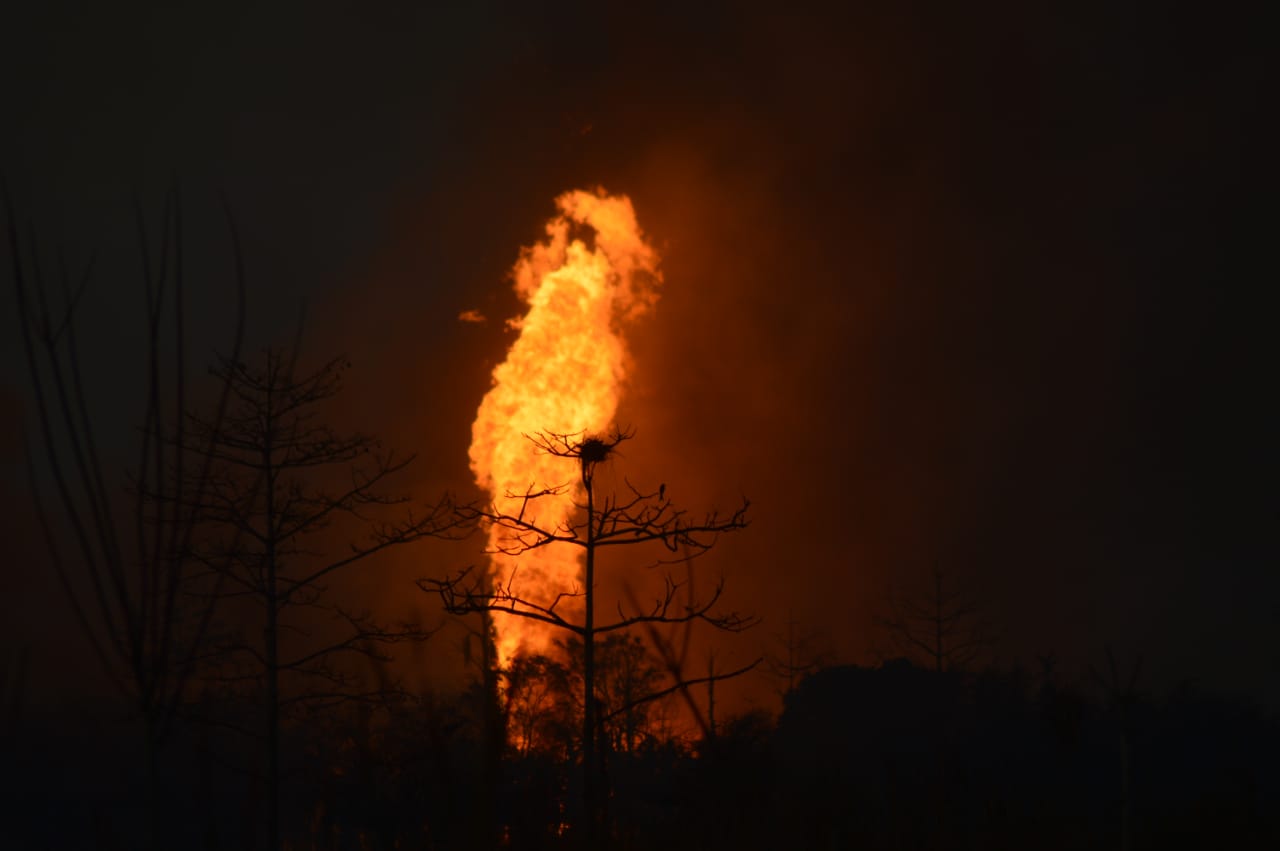
The affected villages include Baghjan revenue village, Baghjan Karua Basti area, Kochuwani of Baghjan village, a part of Korua ward number 2, ward number 3 of Baghjan village, a portion of Nagbanshi and Karua Basti, Bejoli Basti area, Rangagora Natun Gaon, Gotong and Dighal Tarang revenue village.
Over 8,500 persons from about 1,510 families were sheltered in 13 relief camps, where the mandatory social distancing protocols for COVID-19 was impossible to enforce.
“The biggest problem is that of toilet and bathroom. At any time of the day, you will find a long-queue outside the bathroom and toilet,” says Hazarika, whose entire house and a small tea garden was destroyed in the blaze.
In Baghjan Dighal Tarang ME School, one of the main relief camps, more than 2,000 villagers from over 534 families were housed days after the blowout. Some families have now returned to their homes as the intensity of the fire has ebbed a little after raging for over 70 days.
Oil India Limited (OIL) is hopeful that in a couple of days, the fire will be doused. “On Monday, we will make a second attempt to put the blow out preventer (BOP). Hopefully, this time we will be successful,” OIL spokesperson Tridip Hazarika said over phone.
A BOP is a valve-like mechanical device, used to seal, control and monitor oil and gas wells to prevent uncontrolled release of crude oil or natural gas.
How it started
The disaster in fact started due to a botched-up BOP removal operation. Baghjan 5 oil well rig is a high-pressure oil well. It is among the 22 producing wells — 18 crude and four gas — of the Baghjan oil field, one of the two major oil fields of OIL, India’s second largest crude oil producer, with the other being Barekuri oil field in Tinsukia district.
The Baghjan 5 oil well rig itself was producing 1 lakh standard cubic metre (SCM) of gas per day from a depth of 3,870 metres.
But of late, its yield started dropping, requiring a workover, which is a technological term for some overhauling operation to extend the productivity and life of a well.
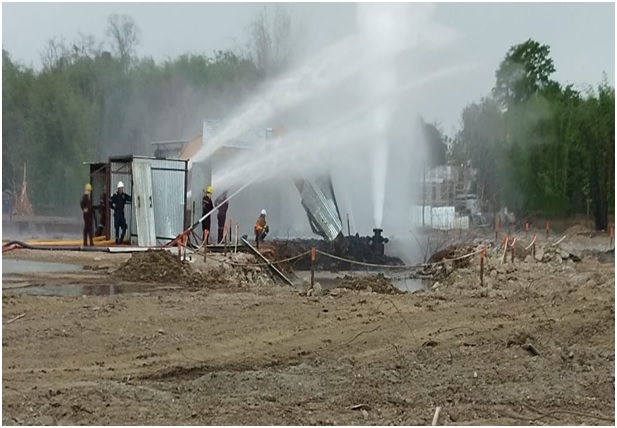
OIL had roped in Gujarat-based John Energy Limited to carry out the complex “repair work”, for which, the gas well was required to be sealed first by mounting the BOP on top of the well to regulate pressure of the gas.
“Everything was going as per the plan and a cement barrier was put in place to isolate the oil producing zone. Cementing work was completed on May 26. As per the standard operating procedures, the drilling can be done again only after 48 hours, the time needed for the cement casting to settle,” said an official of the OIL.
Once the casting is settled, the BOP is removed. But in this case, the mandatory waiting period was allegedly not followed. OIL sources told The Federal that within 14 hours, preparations were afoot to drill the rig. On May 27 as the blowout preventer was taken out and 10 pipes were inserted in the rig, the gas started gushing out with a pressure of 4,500 pounds per square inch, blowing out the unsettled cement cap, the sources added.
More violations
On Wednesday (August 11), following an internal inquiry, the OIL suspended two of its officials for the negligence and also issued a show-cause notice to John Energy Pvt Ltd, asking it to explain the bodge.
There are, however, far greater lapses from which the OIL cannot wash off its hands by just making a few of its officials scapegoats. According to an eight-member expert committee constituted by the National Green Tribunal (NGT) to probe the blowout, OIL violated key environmental norms.
A 406-page preliminary report submitted by the committee headed by former Gauhati high court judge Brojendra Prasad Katakey to the tribunal made a startling revelation that OIL did not even have the mandatory pollution clearances for the drilling of the rig.
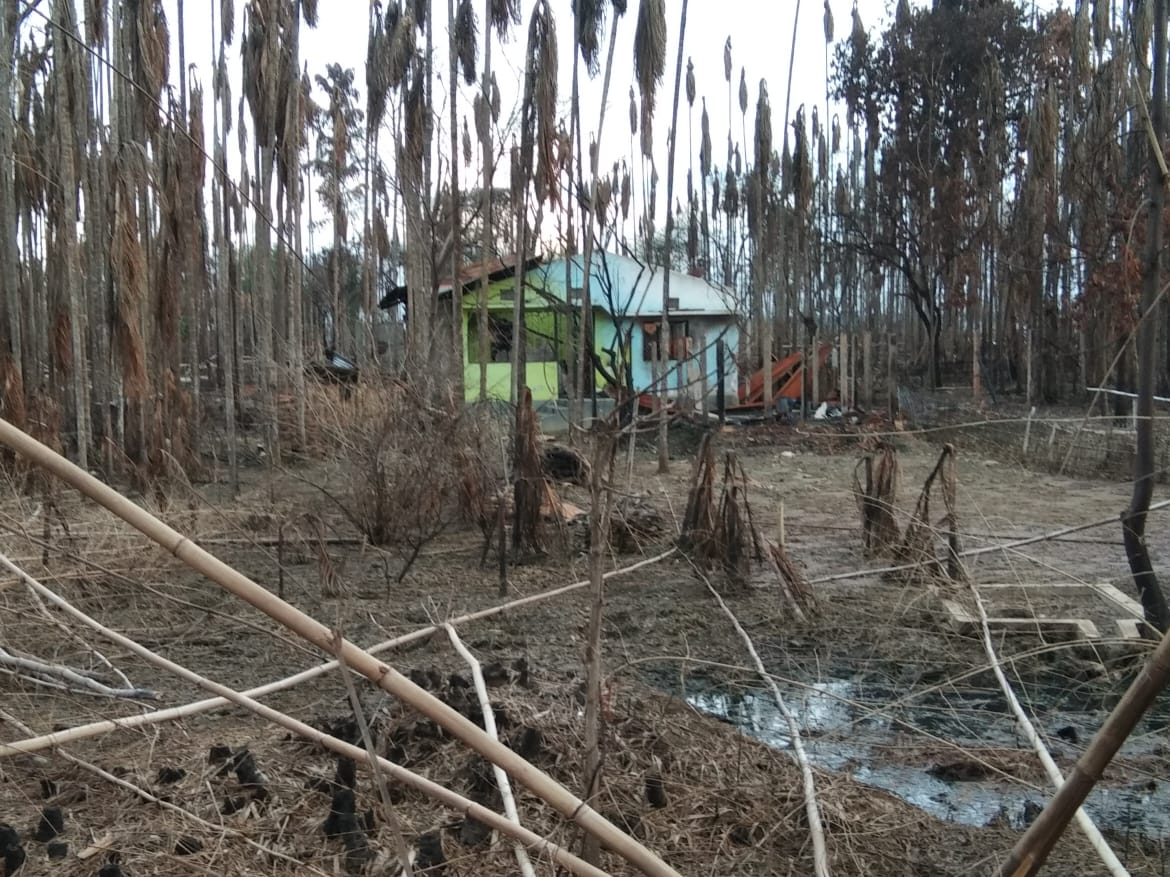
“OIL did not have the mandatory Consent to Establish and Consent to Operate both under the Section 25 & 26 of the Water (Prevention & Control of Pollution) Act, 1974, under Section 21 of the Air (Prevention & Control of Pollution) Act and the Rules framed thereunder, when it first started its drilling operations in Well Baghjan-5 in 2006,” said the report accessed by The Federal.
Significantly, the committee has also called for scrutiny of all existing projects of OIL in Assam to ascertain if they meet the mandatory requirements of obtaining consent and authorisation under corresponding Acts and Rules.
OIL, however contested the damning report, saying it was prepared based on desk research and secondary data which needed to be verified.
The committee refuted OIL’s allegations and strongly defended its findings. Stating that the blowout and subsequent explosion has led to extensive damage to both publicly-owned resources, including the Maguri-Motapung wetland and Dibru-Saikhowa National Park, the tribunal directed OIL to deposit ₹25 crore with the district administration as interim compensation for the damage.
The monetary compensation would not mitigate the damage, environmentalists and local residents say.
Hazarika wonders whether he would ever be able to revive his damaged tea garden with the compensation money.
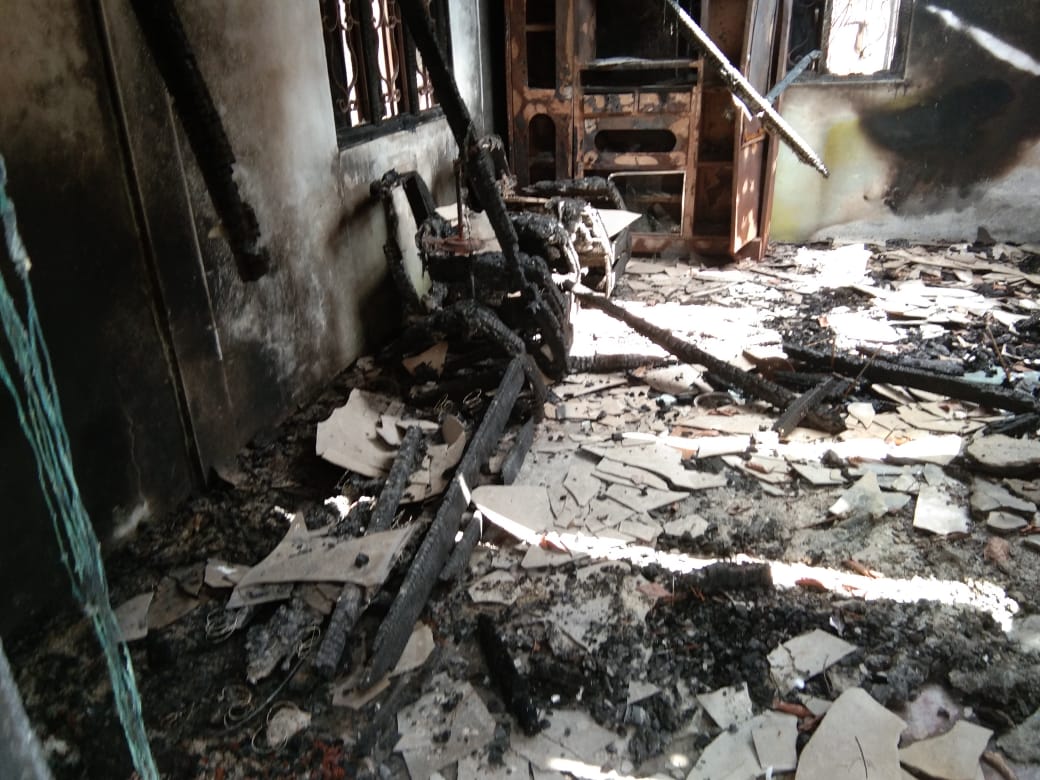
Environment impact still unknown
Environmentalist Nirantar Gohain says no monetary compensation would bring back the lost biodiversity of Dibru-Saikhowa and Maguri wetland.
The Dibru-Saikhowa National Park has a core area of 340 sqkm, while the biosphere reserve spreads across an area of 765 sqkm. It is the home to India’s only feral horse population, besides over 30 others mammal species including Royal Bengal tiger, sloth bear, Chinese pangolin, Asian elephants, Asian water buffalo.
Maguri, a large wetland, is an Important Bird Area (IBA) with the presence of nearly 300 species. Gangetic river dolphins, fishes and birds died due to the fire, triggering ecological concern.
The real damage to the ecology would be known in the days to come and its impact would be long lasting and even irreversible, Gohain says.
What had caused more worry was that a few days before the Baghjan disaster, OIL had received environmental clearances from the Centre for extension of drilling and testing of hydrocarbons at seven more locations near Dibru-Saikhowa National Park area.
“Jui aji nohole kali numabo, ami ghoroto jam, kintu atanko tu xodai takhibo (The flames will get doused today or tomorrow, we will also return home, but the fear of death and destruction will always haunt us,” Hazarika said, summing up the feeling of the people in the area who are caught in a predicament over environmental concerns and development.
(With inputs from Avik Chakraborty in Baghjan)

